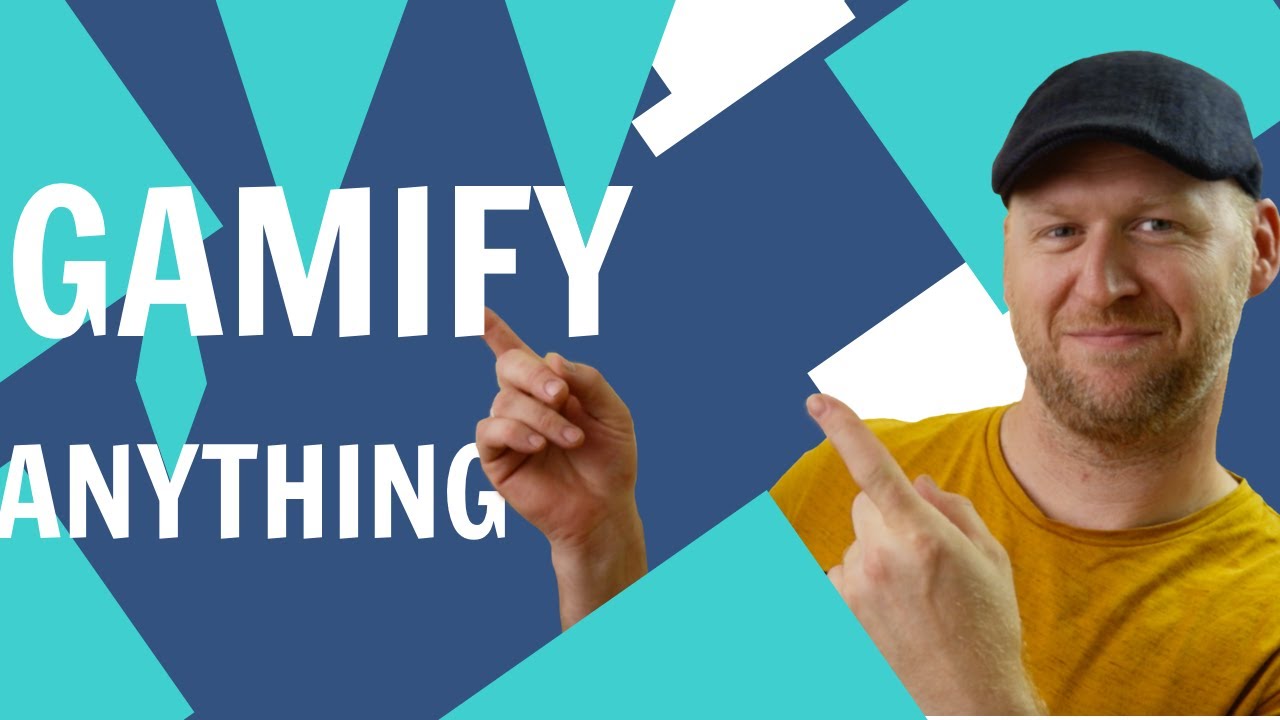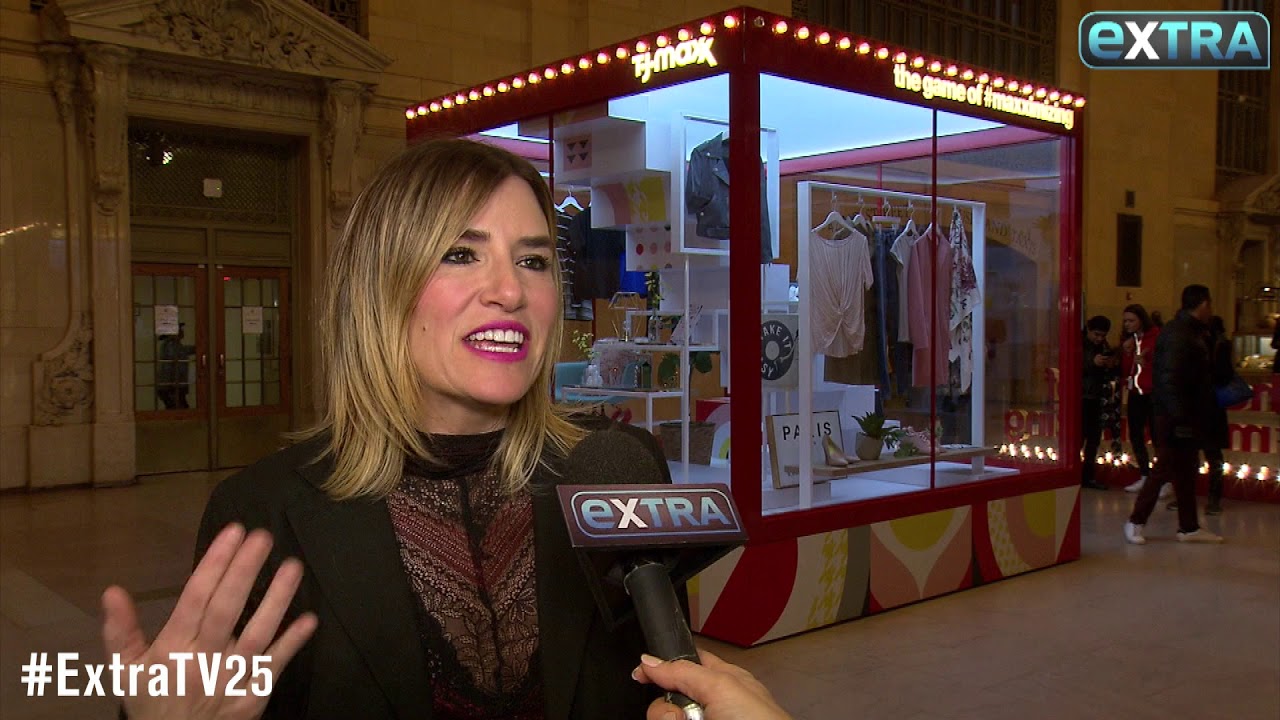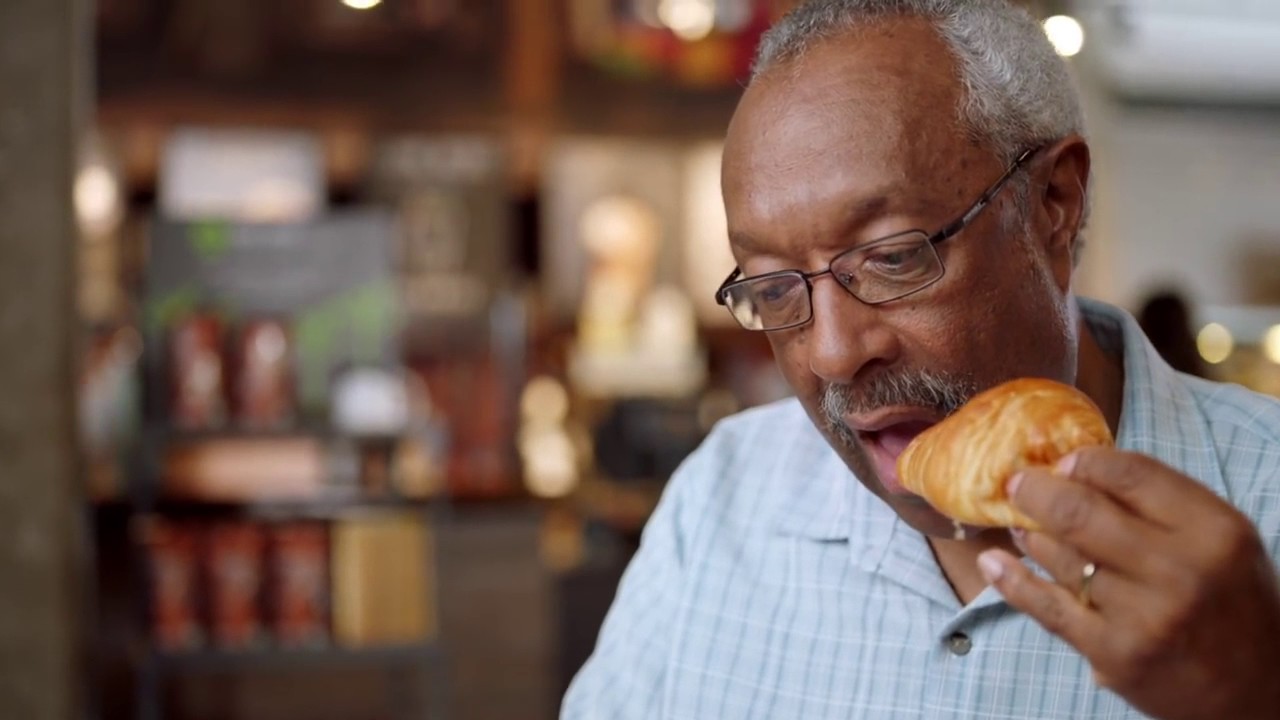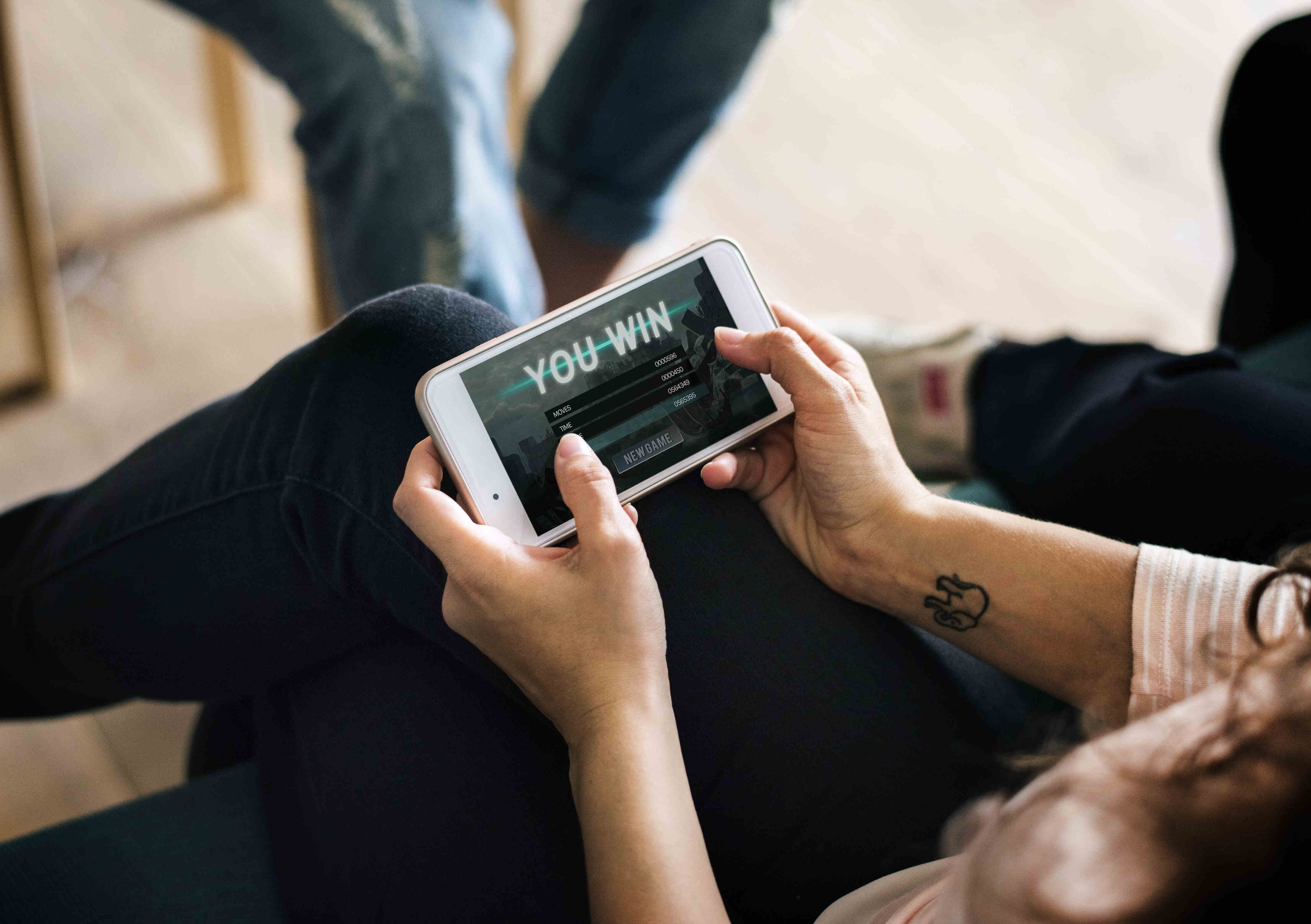Too many businesswebsites are boring or don't stand out. Websites like these do their job as places to make purchases, but they don't do anything else to make people more interested in a brand, but this doesn't have to be how your site looks.
There's a way to add some fun to your website that will make it more interesting and memorable for people who visit it, the solution is brand gamification.
Gamificationhelps you get more people interested, get more leads, and increase the average order value. It also lets you find out more about your website's visitors, which can help you sell more products.
So, if you want to spice up your website and make your customers more loyal, keep reading to find out how gamification marketing is the answer.
What Is Gamification?

Gamification in Business - How to Build Loyal Customers And Drive More Sales
Gamification is a form of interactive marketing in which game-like elements are used to get the word out. Simply put, gamification is using games on your website to get people to interact with it.
The goal of gamification is to make it more likely that people will repeat the steps that are wanted. Games can be used to change how people act. Score systems, ranking lists, virtual goods, and small rewards are all important game elements that are often used in Gamification.
Gamification is becoming more and more popular in education, marketing, and other fields. In any game, the goal is to win, right? So, you'll want to make sure that your gamified interaction ends with a good offer.
Or at least something fun enough to get people to click and play on your website. You can come up with any kind of idea for gamification that you can think of.
You can make games for holiday campaigns, the launch of a new product, a discount offer, or just to promote your brand. But there will be more on these use cases a bit further down. By the way, have you thought about your favorite games from other websites?
New research shows that Gamification makes customers more loyal and increases the motivation of both customers and employees. (Dr. Stadtgen, Gamification and Motivation, 2015) If it's done right, it can give companies a good return on their money.
Determining Your Goals For Brand Gamification
Before diving into specific types of gamification, it's important to think about what you want to achieve with your strategy. You can add games to your site just because you can or because all the cool kids are doing it, but you should think about what you want to happen.
Gamification is a powerful way to reach a number of key performance indicators (KPIs) for your business. Most of these KPIs are linked to the gamification benefits listed above. With gamification, your goal could be to:
- Increase visitor time spent on page
- Increase order value by offering a discount
- Build brand loyalty with reward points
- Position your brand as the “fun” brand with frequent new games
- Educate customers about your brand and offers
- Collect more (& better) customer data
- Once you know your goal, you can further decide which type of gamified elements will help you reach your benchmarks.
Benefits Of Brand Gamification
Brand gamification does more for your business than just giving your website visitors a little more entertainment.
Gamification Increases User Engagement
Engagement is a great way to tell if the people you want to buy from you are actually interested in what you have to offer.
Gamification makes it easier to get people to participate and to keep track of how much they do. If a customer is willing to take part in a gamified part of your website, it means that your game, product, or offer was interesting enough to get their attention.
Games not only get people interested at first, but they also get them to click through to the end so they can do something with the prizes they've won.
Gamification Builds Brand Awareness
Could your company be the next Google, which is known for coming up with surprising new games every holiday? But could your company make games that are fun and start to get people talking about them? Definitely!
Gamification can help raise brand awareness by getting people to share their results with their friends or by making the experience so cool that people will remember your company in the future.
Gamification Increases Conversion Rates
When an ad is stuck in one place on your page, it's easy to just ignore it and keep scrolling. A gamified ad, on the other hand, makes people want to pay attention.
When a customer interacts with a gamified ad, they are more likely to use their "prize winnings" while shopping. This is because they think they deserve a discount.
With the help of a new game app, Domino's Pizza was able to make 30% more moneyfrom sales. Domino's Pizza made a game called "Pizza Hero" where customers can make their own pizza by dropping toppings onto the pizza in a game-like setting.
At the end of the game, the user can choose to order their lovely pizza. This fun twist on their "personal pizza" offer made more people talk about it than the usual "personal pizza" offer you might see in a banner or pop-up.
Gamification Educates Customers On Products/Services
Gamification gives you a way to teach your customers in a way that works for both of you. For example, if you make a personality quiz to help customers choose the best products for them, you are both listening to what they want and telling them about what you have to offer.
When you use games to teach your customers, they are more likely to remember what you teach them because they aren't just scanning a product page for answers. Instead, your products become more personal.
Gamification Helps You Collect Data In A Non-intrusive Way
In a world without third-party cookies, it's important to collect "zero-party data," the data that customers give you on their own volition.
First, you can use gamification to collect this valuable customer information by asking for email addresses or social medialogins. But you don't stop there with the information you gather.
Then, once you know who the customer is thanks to these credentials, you can look at how they use your website, how they interact with it, and what they like.
For example, if you make a quiz game, you can change the questions to help users find the right product. You can also use the valuable information they give you later.
It's a great, non-intrusive way to find out what they like and value in products through your gamification campaigns.
4 Brand Gamification Ideas To Try

5 Types of Gamification Marketing
You can add a number of gamified elements to your website, and these elements can be used in even more ways. Let's look at a few ways that gamification can help your marketing efforts to get your creative juices flowing.
Games Like "Catch-me" Or "Peek-a-boo" On Your Website
A catch-me-if-you-can game is an easy way to get people to pay attention to what's happening on your website. This kind of game could start as soon as someone visits your page or after they click "Play."
A game like this would be a fun way to break up the monotony of browsing the internet.
At the end of your game, you can give the player a small discount on their order, show them how they did, or even tell them something interesting about your campaign that is relevant to the game.
Loyalty Rewards Games On Your Website
You want your customers to be loyal, and they can benefit from doing so as well. Also, we know that it costs 5 times less to keep a customer than to get a new one. A loyalty reward game is a great way to bring attention to both of these things.
First, you want to get people to sign up for your loyalty program when they visit your website. You could encourage people to join by showing them a preview of the gamified part.
For example, a customer could get a gamified loyalty reward by opening a mystery box to win a prize right away or by getting a scratch-off reward every day.
But it's also important to keep your loyalty club members interested in what you have to offer and interested in joining. A US study found that consumers are members of an average of 17.5 loyalty programs, but they only use less than half of them.
So, if you want to get members to shop again, think of creative ways to use gaming, like this Starbucks rewards game.
Spin-the-wheel Games On Your Website
Spin-the-wheel and wheel-of-fortune games are great examples of luck-based gamification marketing. It's a nice thing to do for people who visit your website for the first time or for customers who are checking out.
This is a good way to get people to pay attention to your campaigns and special deals. Most pop-ups are easy to ignore, but a colorful, animated, and well-known game like the wheel of fortune can get people to do something.
Score Leaderboard Games On Your Website
People will be more interested in your website if it has leaderboard games. Some examples of these kinds of game-like features are trivia questions, memory games, and tasks where users have to beat the clock.
Customers are more likely to share the results of a game with their friends or on social media if the game gives specific results.
6 Excellent Examples Of Brand Gamification
Pepsi
In 2020, Pepsi started a special augmented reality (AR) ad campaign with Lionel Messi, Paul Pogba, Mo Salah, and Raheem Sterling, four of the best football players in the world.
During the promotion, people could scan QR codes on limited-edition Pepsi cans to get AR versions of the players on their phones. Then, Instagram users could play a virtual kick-up game that could be shared with other people.
The augmented reality game was part of the company's "Pepsi, For the Love of It" campaign, which was a cross-channel digital experience meant to get customers more interested in the brand and help people recognize it.
T.J. Maxx

Get Ready to Maxximize! Tastemakers Help T.J.Maxx Launch New Guessing Game
In 2019, T.J. Maxx started a game-based awareness campaign with pop-up games in six different places in New York and Los Angeles. Each pop-up store had a set of products chosen by a group of six celebrities and other influential people.
People in the public could win the things in each installation if they guessed the total value of the things on display correctly. They just had to post their guesses under T.J. Maxx's Instagram videos or tag them using the #maxximizing hashtag.
"Maxximize" by T.J. Maxx was a short-lived gamification campaign. Still, it was a great way to get the word out about the brand, make an impact on social media, and spread the main message that T.J. Maxx products are cheaper than you think.
Gucci
Gucci is interested in NFTsand the new field of "digital fashion," just like many other high-end fashion brands. So far, Gucci has made clothes and accessories for digital avatars on Roblox, Pokemon Go!, and Zepeto, which is a virtual world where people can make their own avatars and talk with friends.
Gucci has also made the Gucci Sneaker Garage app, which lets people make their own digital Gucci sneakers by changing colors and adding designs. Gucci is using gamification to reach a whole new market of mostly younger online shoppers and gamers.
Many other high-end fashion brands, such as Louis Vuitton and Balenciaga, are following Gucci's innovative approach to the digital world.
Casper
In 2019, the mattress company Casper put a number of adsin New York City subway cars. Each ad had a rebus puzzle, which is a series of pictures that spell out a word but don't give any other information.
Casper put the puzzles and their answers on their website and even made a puzzle coloring book that people could download.
The goal of the campaign was just to make people aware of the brand, not to build loyalty or boost sales. Still, it's a great example of how even simple gamification can be a great way to get people interested in your business.
Starbucks

Starbucks Rewards, Made Even Better With the App
Starbucks was the first company to use many of the omnichannel marketing strategies that other big brands now use. Starbucks Rewards is a well-known loyalty program that brings in between 40 and 50 percent of the company's total revenue.
This makes it one of the most valuable loyalty programs in the world. In the beginning, customers were given a rewards card that they could use to earn points when they bought things and later use to get discounts.
Now, Starbucks Rewards has grown into a sophisticated app that can be used for many different things and has a lot of useful features for people who go to Starbucks often.
Using gamification in a smart way is a big part of what makes the Starbucks loyalty program work so well. You can save up the stars you earn with each purchase to get discounts, free menu items, and other perks.
The Starbucks Rewards app made special offers for each customer based on their purchases and preferences. The app also gives users tasks to do, like getting a free drink if they buy a certain amount of a certain product in a week.
It also has time-limited deals, like double stars on certain days, to give users more reasons to use it.
Lazada
Lazada, a Singaporean e-commerce company, is known for going beyond gamified brand awareness campaigns and turning shopping itself into a game.
Lazada's app has a lot of game-like features, like rewards for referring friends, vouchers and coins that can be collected, daily bonuses, countdown timers, and prize giveaways.
The app makes coupon redemption more likely by limiting the number of customers who can use a certain coupon. This makes customers more likely to take advantage of limited-time offers, which keeps them using the app more often.
"Slash It!" is the best way for the Lazada app to make shopping fun. Customers can save money on a certain item if they can get enough of their friends to click on their personal Slash It! promo link.
Each of Lazada's game-like features has been fine-tuned to help customers reach their goals and do things that are good for them. The rewards get better the more users shop or even just use the app.
People Also Ask
What Is Brand Gamification?
Gamification marketing is an improved way to market that uses game design elements to attract and keep customers. In gamified marketing, people are encouraged to do something because it has elements of competition or a reward.
How Do Companies Use Gamification?
A trend where game mechanics are used outside of games to get people to act in a certain, desired way. In the HR world, companies are using gamification more and more to get employees more involved, increase productivity, and promote healthy habits, among other things.
What Is An Example Of Gamification?
Some game mechanics that are used in gamification include:
- Goals: Do the task and get something in return, like a badge or points.
- Status:When a user does something, they move up in level or rank.
- Leaderboards: Leaderboards show who is "winning" and encourage people to work harder so they can keep up.
Conclusion
Using gamified techniques to help sell a product is a great way for a company to boost sales. The examples above not only show how innovative game design can be but also how the end result is happy, engaged users who are often excited to tell their friends and family about their experiences.
When gamifying your own brand, you need to be careful. Gamification is not a magic bullet, and companies need to know that. The event needs to be carefully planned.

